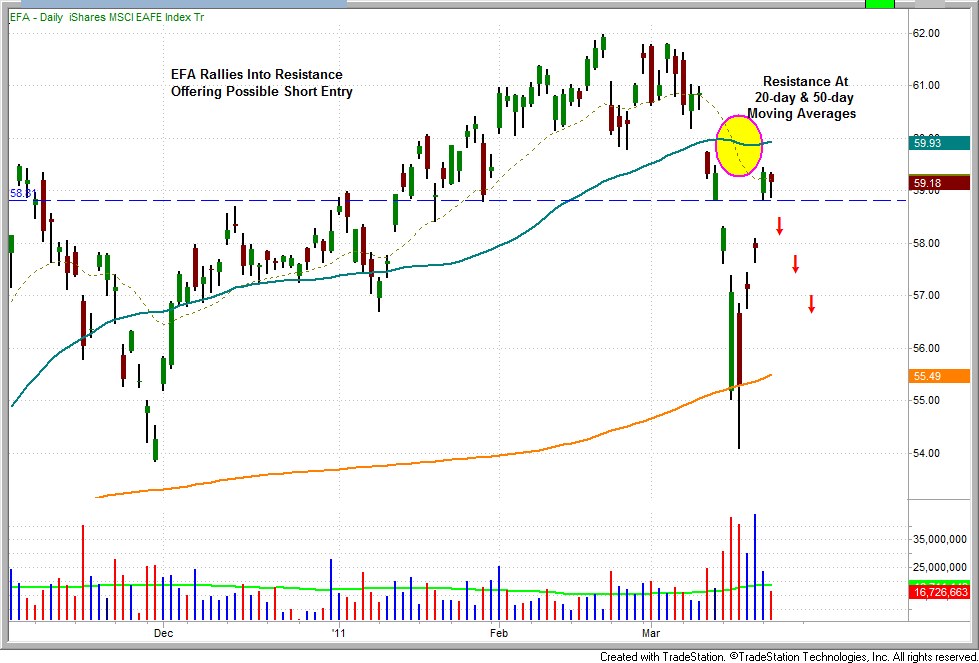| The Wagner Daily ETF Report For March 23 |
| By Deron Wagner |
Published
03/23/2011
|
Stocks
|
Unrated
|
|
|
|
The Wagner Daily ETF Report For March 23
Stocks sold off marginally on Tuesday amidst light trade. In a reversal of yesterday's action, mid-cap and small-cap stocks led the decline. The S&P MidCap 400 and the small-cap Russell 2000 fell by 0.7% and 0.5% respectively. The S&P 500 shed just under 0.4%, while the Nasdaq dropped 0.3%. The blue chip Dow Jones Industrial Average posted a modest 0.2% decline on the day.
Market internals ended the session mixed. Volume fell on both the Nasdaq and the NYSE yesterday. Turnover declined on the Big Board by 17.4% and on the Nasdaq by 6.1%. Declining volume was greater than advancing volume by a ratio of 2.1 to 1 on the NYSE and 1.7 to 1 on the Nasdaq. Tuesday's internals provided little clue as to the market's next move.
In yesterday's newsletter we elaborated on the key zones of resistance on the Nasdaq, DJIA and the SPY. Today we will look at key support levels. Support and resistance levels play an important role in deciding when to enter or exit a trade. In addition to keeping a close eye on support and resistance levels on open positions, we carefully monitor support and resistance levels on the major indices. This review provides valuable information as to the relative strength/weakness of each of our positions. Further, it assists us in our exit strategy. For instance, if we were long an ETF and the market was approaching a key resistance level, we may consider exiting (or lightening up) on the position even if it had not yet reached its target. Despite the relative strength or weakness of an ETF, it is difficult to fight the broad market trend.



After a violent selloff, the iShares MSCI EAFE Index ETF (EFA) has just as abruptly rallied back into resistance. A volume fueled move below the two day low ($58.80) may provide a short entry trigger for this ETF. We will be monitoring EFA for a possible short entry.

The broad market was directionless yesterday. It is not unusual to see a day or two of deliberation after a significant move in the market. The fact that the 20-day EMA has crossed below the 50-day MA on the Nasdaq, S&P 500 and the DJIA, suggests another move lower. Nonetheless, a two year bull market doesn't generally give up without a fight. We are not suggesting the bull market has ended. Rather, now that key moving averages have failed to provide support, the number of investors/traders looking to take profits or short the market typically increases significantly.
Deron Wagner is the Founder and Head Trader of both Morpheus Capital LP, a U.S. hedge fund, and MorpheusTrading.com, a trader education firm.
|